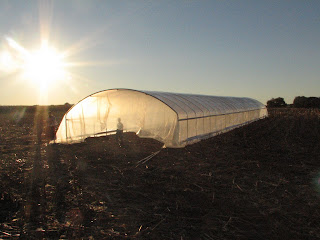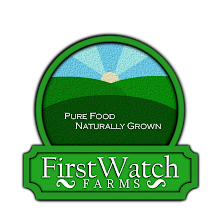Are you ready for some great tasting, tender roast that's been cooking all day? Has it been awhile since you had a good NY Strip or Delmonico Steak? Or, are you ready for some good, versatile hamburger?
Well, if you are, we've got what you need - our own grass-finished beef!
Well, if you are, we've got what you need - our own grass-finished beef!
We raise our beef cattle during the summer outside, in the fresh air and sunshine on nothing but the best food source for them - 100% grass!
We move them periodically to new sections of pasture to help provide them with clean, high quality food.
When cattle eat grass, both they and we make out a lot better. The cattle live in the environment they were created to live in, thus making them healthier and happier. And we get to enjoy meat that is nutritious, tasty, and healthy for us. Check out the amazing benefits of grass-finished beef at the bottom of this post, such as higher Omega 3 and 6 fatty acids, vitamins, CLA, and far, far less danger of E. coli.
We raise a variety of cattle breeds - all of them being designed to produce beef. Click here and scroll down to learn more about the breeds.

Q. What's the difference between "grass-finished" and "grassfed" beef?
A. On our farm, very little. Grassfed cattle's diet is made up of strictly grass year around. Our grass-finished cattle, because we don't have a barn, are boarded during the winter at another farm, where they eat silage (fermented forage and grain) and hay. But once spring comes, the cattle are turned out to green pasture and ingest nothing by grass all summer long until they're processed in either July, October, or November. So during the last 3-7 months, which are the most determinant in the quality of the meat, our cattle eat only grass. The end result: Almost no difference between grass-finished and grassfed beef.
They're both great for you!
Hungry yet?
We've got a wide variety of cuts available from Porterhouse and Sirloin Steaks, to Prime Rib and Chuck Roast, to Ground Beef and Short Ribs. (Remember, it's not too late to grill yet; we still are.) We even have our own Beef Sticks.
To see a complete list of cuts available and prices, click on the links below:
To order, send us an email or give us call with what you would like.
~ ~ ~
Nutritional Benefits of Grass-Finished Beef
CLA (Conjugated Linoleic Acid)
CLA is a “good” fat that in studies has shown promise of fighting cancer and cardiovascular disease. Studies have shown that grass fed beef have any where from 2-5 times the amount of CLA as beef raised on a high grain diet.
Omega-3
Both Omega-3 and Omega-6 are essential fatty acids and a proper balance of these is needed for maintaining good health. Omega-6 is known to help with blood clotting, which is important if you receive a cut or serious injury. Omega-3 on the other hand is important for blood thinning. A proper balance of these two ensures that you will neither bleed to death nor have a heart attack or stroke from clogged arteries. Unfortunately, American’s at large have diets too high in Omega-6 and lacking greatly in Omega-3. Cattle raised on grain are higher in Omega-6, taking it from a healthy to unhealthy balance and raising the risk of heart attacks or strokes in human consumers. Grass is rich in Omega-3 and Beef raised on grass have shown to have a healthy balance between the two essential fatty acids, giving you a more rounded diet.
Vitamin E
Vitamin E is an antioxidant that helps protect against damage caused by free radicals. Free radical build up can lead to cardiovascular disease, cancer and inflammatory conditions. Vitamin E may help reduce cancer, heart complications and risk of eye disorders such as cataracts and age related macular degeneration. Source for the health benefits of Vitamin E


























































